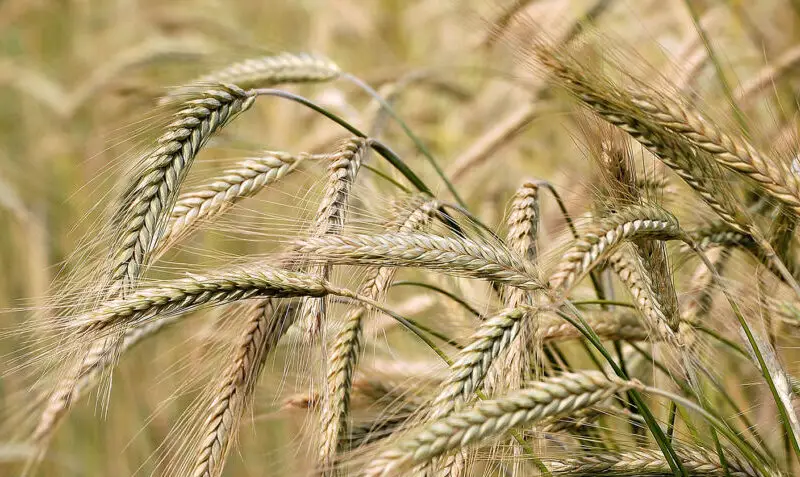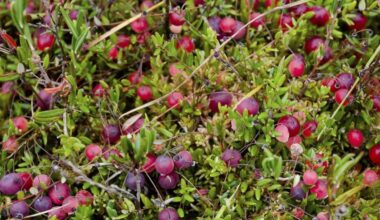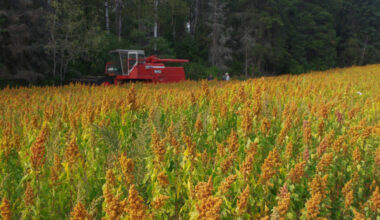Along with wheat, it is one of the first crops in the history of mankind. We consume it every day, often without knowing it, because of the many and varied uses of barley. But what about its culture? Here is what you need to know.
Contents
Planting barley
Barley is a plant that tolerates frost. It is sown in late fall or early spring.
Barley (Hordeum) is grown in the open ground. It can be grown in all types of soil, provided that they are well aerated and without standing water. Before winter, the stems of the ornamental species must be cut to encourage their recovery.
Once harvested, barley grains should be sun-dried and air-dried for a period of 2 to 7 days. Once dry, barley can be stored for one year if placed in a cool, dry place. When cooked, it will not last longer than 5 days if kept in the refrigerator!
Where to plant barley?
Barley can be planted in pots for the pleasure of the eyes or to quickly consume the fresh shoots, but most of the time in the ground.
You must sow in full sun, in a rich soil, but poor in organic matter. The pH must be higher than 6, the texture of the soil can be clayey if it remains flexible. A soil with a high humus content is not recommended.
When to plant barley ?
Sow a spring barley in February, March or April if the winter is harsh, a winter barley from mid-September to end of October.
In pots, you can sow all year round.
How to plant barley in the ground?
In the open ground, the target population is 240 plants/m². A sowing of 350 grains/m² must be done to reach the desired population.
If the soil is poor, you can fertilize it. Use this dosage: nitrogen (N) 17, phosphorus (P) 8, potash (K) 8, 1 kg of fertilizer per m².
- Before sowing barley, it is necessary to prepare the soil. Spade the plot to aerate and decompact the soil. During this step, it is best to remove weeds, taking care to remove the roots. Using a hook or rake, break up large clumps of soil to create an even bed.
- In a 1 inch deep furrow, seeds are placed every 1 inch. Each furrow is spaced 5 inches apart.
- After covering the seeds, the soil is tamped down with the back of the rake while keeping a slight depression along the seeded furrow.
- Water copiously without runoff. Germination is very fast.
How to plant barley in a pot?
- Use a mixture of 1/3 sand, 1/3 loam and 1/3 potting soil.
- Drain the bottom of the pot with gravel, sow a sparse carpet of seeds or a barely covered central poquet.
For a consumption of the germs, with or without consuming the seed, cultivate in pot and cut the fresh shoots when they measure between 4 inches. This can be done all year round in your kitchen for example, if it is bright.
Barley cultivation and maintenance
With the arrival of spring and the resumption of vegetation, it is important to control the development of weeds by regular weeding.
Watering should be reasonable at the beginning, a light constant humidity is enough. The more the plant develops, the more water it requires. Regularly follow the soil of your planted lines in order to react if necessary. A lack of water is detrimental to the production. When the ears are ripe, watering is practically stopped.
At the end of winter, when the barley forms herbaceous tufts, weed the soil to butter and encourage your plants to heel (emit several stems). From this moment on, growth becomes more active. The stems straighten up and take an upward position. It is at this time that it is good to fertilize with a granular fertilizer dosed as follows: N17, P8, K8. Barley is not very greedy in phosphorus and potash, which explains the lower content of these 2 elements. 1 kg per square meter is a good average. This phase ends at heading, theoretically at the end of May, June-July.
As soon as the ears of corn turn golden, watch out for birds. It is wise to buy a small net (2 m × 2 m for a square of one meter) in advance, because if they pounce on your beautiful wheat, the pillage can be lightning. Stretch this net over 4 stakes and tie it on a string going around the crop to prevent birds from sneaking underneath.
The grains reach their full maturity from June to August depending on the species. When the stalk dries and the ear bends down, it is time to harvest. When the stems and ears have turned yellow, regularly remove a few grains for inspection: your barley is ripe when the nail struggles to penetrate the grain.
Diseases, pests and parasites
If you wish to plant barley in your garden, you should be aware of the following pests:
- Rust ;
- Powdery mildew ;
- Fusarium;
- Barley smut, which is manifested by blackening of the ears.
There are many pests that can attack your barley plants during the growing season: slugs and snails love young shoots in the spring, but there are also aphids, leafrollers, leafminers and leafhoppers.
Barley harvest
When and how to harvest barley?
Barley reaches maturity between June and August depending on the species. The grains are ripe when your fingernail can barely penetrate them.
In good dry weather, harvest with a sharp sickle or shears, cutting at 4 inches from the ground. It is also possible to pull up the plants.
How to store barley?
Any stored grain is susceptible to degradation of its food and health qualities.
To remove all traces of moisture and to complete the drying of the seeds, they should be left to dry in the open air and in the sun for two days to a week, depending on the weather and ripening. Be careful if you let them dry outside, morning dews can stop the whole process.
Dry barley should be placed in an airtight container away from insects, rodents and moisture. Stored in a cool, dry place such as a pantry, it will keep for one year.
Cooked barley can be stored in the refrigerator for 3 to 5 days and in the freezer for up to one month.








